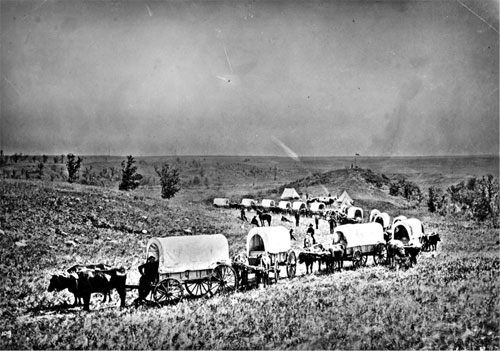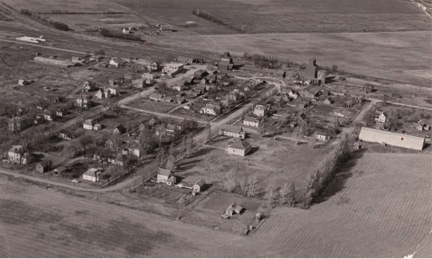HOME
1. Introduction
2.
Historical Overview
3. A Scientific Approach: Experimental
and
Demonstration Farms
4. The Greening of the West
by Lyle Dick,
Parks Canada
5. The Lyleton Area
Shelterbelts
6. The Indian Head
Shelterbelt Centre
7. The P.F.R.A
8. The Gerald Malaher
Wildlife
Management Area
9. Arbor Day & Tree Stories
10. Shelterbelts and Modern Agriculture
11. Links & Resources
|
2. Historical Overview
Since
the days of the first agricultural settlements on the prairies
began trees have been an issue. To a generation whose parents toiled at
removing trees from Ontario farms to make way for productive crops, the
first glance at the treeless expanse of southwestern Manitoba was a
revelation. They saw immediately the ease with which they could
transform the grassy plain into orderly fields of cereal crops. No
backbreaking hours felling the trees, and fighting with the seemingly
endless stumps and tree roots that were left behind. Just plow and
plant!
Of
course they needed trees for fuel and building supplies, but as long
a the homestead was within a reasonable distance from the wooden
valleys of the rivers or the heavily forested Turtle Mountains, most
preferred a flat quarter section with an unbroken horizon.
And that
worked, for a while.
There
were quite a few things about this land that the first settlers
didn’t know.
They
didn’t know that this productive land, which at first glance
looked so fertile, existed in a fragile balance. The often-repeated
story was of the profusion of wild strawberries, so thick that the feet
of the oxen were stained red. What wasn’t told was that the succession
of wet years in the early 1880’s was not necessarily a permanent state
of affairs.
They
didn’t know that the treeless prairie was treeless, not because it
wouldn’t naturally support such growth, but because the ever-present
prairie fires struck saplings down before they had a chance to get
started. Where trees were established, along streambeds and in hills,
the retention of moisture that they fostered was the defense against
the fires. They would figure this out before long.
 The
Boundary Commission travels through a dry and
treeless southwestern
Manitoba in 1873
The
Boundary Commission travels through a dry and
treeless southwestern
Manitoba in 1873
 Tree
planting initiatives were evident in all early prairie villages.
Lauder Mb.
Tree
planting initiatives were evident in all early prairie villages.
Lauder Mb.
|


